The friends that make you want to run 100 miles.
It’s somewhere around midnight in late October, on the outskirts of Boulder, Colorado. Half a dozen people are 26 hours into a 100-mile run that few people have ever heard of, and they’re not even close to the finish. It’s freezing and dark. The world seems to exist in the small circle of a bouncing headlamp beam. From the ridge 3,000 feet above town, the twinkling lights below look enticing—and far away. Sleep comes in improbable places, like on the rocky flanks of an 8,000-foot peak. There’s almost no reason for them to really be out here at all, but they are.
The thing they’re doing is the Boulder Badass 100, and it’s definitely not a race. The people participating are the Rocky Mountain Runners (RMR), a running club made up of 200-some nature-bathing trail lovers, notable for their sense of possibility, Kelly green T-shirts, weekly meetups and the will to earn a certain satanic burger that uses grilled cheese sandwiches for buns.
For a group that mainly meets up to run the trails around Boulder at a conversational pace, its members are known for headlining some of the world’s most grueling ultramarathons. In their ranks are multiple winners of the Leadville Trail 100, top-10 finishers of UTMB and FKT-holders of notable routes, like the 48-mile Zion Traverse and the 37-mile Joshua Tree Traverse. The average finish rate of 100-milers in the US is about 70 percent. For RMR it’s 97 percent.
 Left: Rocky Mountain Runners (RMR) cofounder Ryan Smith runs up Chapman Drive with his daughter Isla.
Left: Rocky Mountain Runners (RMR) cofounder Ryan Smith runs up Chapman Drive with his daughter Isla.
Right: RMR cofounder Silke Koester in Boulder.
At their core, many run clubs across the country—of which there are hundreds—offer the same thing as RMR: a way to connect and socialize through a shared interest in running. For many participants, run clubs are less about the running and more about community. Still, there’s something different in the RMR water. It’s sort of a run club on steroids (not literally, of course).
When Ryan Smith and Silke Koester moved to Boulder in 2012 after taking a year off to travel, they sought out a run club like the one they’d been a part of in New York City—the Reservoir Dogs. The Dogs like to run, but they also like to socialize and hang out together afterward. Smith and Koester found family in the Dogs, and they also found each other. It’s through the club that they met, fell in love and got married. But when the couple came to Boulder, a town known for its running, they couldn’t find a good approximation.
“There wasn’t a free, volunteer-led club, and we missed that from NYC,” says Smith, a British import and software engineer. There were plenty of elite operations and coaches for hire, but Smith and Koester’s vision was something a little more fun-loving. He adds, “We were looking to run with a bunch of people and keep it lighthearted.”
From their time with the Dogs, they knew that consistency was the key to success, and they needed a regular weekly run. So in 2013, they debuted their mainstay run: a Monday night jog to the top of Green Mountain (6 miles with 2,800 feet of elevation gain) followed by drinks at the nearby Southern Sun Brewery. Mondays seemed like the least likely day for interested folks to have competing commitments.
It’s hard to imagine that their current group of a few hundred enthusiastic runners, ages 13 to 65, was ever anything else, but on that inaugural Monday, Koester, Smith and a few others who they told about the run were the only ones who showed up. It took a few years for them to gain any real traction. “It would be me and Silke and maybe one other person showing up to run,” says Smith. “It was almost awkward.” Still, they persisted.
They also debuted what Smith felt was key: a group shirt. In the UK, where he grew up, runners are all part of a club no matter their age or skill level, and everyone arrives on race day wearing their “colors.” For RMR, it was quickly decided that the color would be green—a T-shirt color they didn’t often see while trail running in the woods.
“There’s a human desire to belong to a team. People get something out of that,” says Smith, who wore his green RMR shirt when he finished top 10 at UTMB in 2015, when he won the Leadville Trail 100 in 2019 and when he placed third and finished under course-record time at the 2021 Hardrock 100. He’d love to see more people wearing their club colors at races, on the trails and standing next to folks in sponsored garb on podiums. “People feel proud when they pull on the T-shirt.”
By 2014, the group had grown in size and started to bond over food after Monday runs and rain-or-shine trail miles. They no longer had to try very hard (or at all, really) to recruit new members—runners saw their green shirts on local trails and at races and got curious. Word spread quickly, and folks joined and pulled their friends in, too.
 Sean Phillips runs downhill in his signature green RMR shirt.
Sean Phillips runs downhill in his signature green RMR shirt.
That same year, one of their members, Greg, lost a dear friend to terminal cancer. The time between her diagnosis and death was a matter of weeks. To process his grief and to honor her love of the sport, Greg decided to run a 100-mile race every month of that year. At one point, he realized that there was no race for him to run in December.
“We said, ‘Why don’t we just make a 100-miler for you here? And we’ll all do it with you,’” says Koester. “And so we did.” That was the first Boulder Badass. The whole group showed up and supported Greg in his goal, and that’s still the spirit of the Badass today. It’s about getting a certain person, who perhaps has never run 100 miles, across the finish line (which is usually someone’s house). No belt buckle prize, no bragging rights (because only a few people will know what you’re talking about). The motivation must come from within—an experience bolstered by the collective energy of the greater RMR community.
The rules of the Badass are deranged but simple: Smith chooses a group of people to run the Badass, and they must complete it all together. Runners have to work like normal on Friday (“Taking the day off is frowned upon,” says Smith). The worst time to start would probably be when you’re getting ready to go to bed, so it starts at 10 p.m. Finishing on the five peaks of the iconic Boulder Skyline Traverse would be brutal, but it would be way more brutal if you had to leave the ridge and go all the way back down before tagging the next peak, so that’s what they do. That’s why every October in Boulder, you’ll find a group of six to eight runners trudging together in the hills around town, and why you’ll find about five times that number of people out supporting them with snacks and encouragement.
“The point is it’s kind of funny and kind of stupid, but also quite rewarding for people,” says Smith. The finish rate for the Badass is 50 percent. “It’s quite a difficult thing. The whole point is to do it together.”
“I always end up sobbing two-thirds of the way through because it’s this intense, overwhelming experience,” says Koester of the Badass (she failed once and completed it the next time she tried). “In a way, you almost get carried by your community through it. The emotions I’ve felt during the Boulder Badass are unique to the Boulder Badass.” It’s a deeply powerful experience disguised as an endurance feat, and therein lies the key: To access these depths, you have to run for it. In some ways, to understand RMR is to understand the Badass. They are a fierce family that rallies around one another in success and in loss, but they do so in their own way—with ridiculous, difficult long-distance trail running riddled with rules settled on over drinks on Monday nights at the pub.
 Using two maps to get a full picture of the range, Len Strnad and Dan Harris map out a day in the mountains near Fairplay, Colorado.
Using two maps to get a full picture of the range, Len Strnad and Dan Harris map out a day in the mountains near Fairplay, Colorado.
It might seem like RMR is an exclusive group of extra talented runners, but really only that second part is true.
“We end up with a bizarre group of people who all have a completely different life experience,” says Smith. The group ranges from baristas to retail workers to folks with doctorates in quantum computing.
“They’re intense, but in the best way possible,” says Megan Hetzel, who joined RMR last August. A lifelong road runner, she moved to Boulder two years ago and started transitioning to trails. When she showed up for her first Monday run up Green—a prominent 8,144-foot peak a few blocks from downtown—she was thoroughly intimidated. Despite running her entire life, she finished the run completely spent. She thought, Who are these people?
Less than a year later, Hetzel has followed a common RMR progression: join the club and run an ultramarathon even though you didn’t think you wanted to. She ran an informal 50K in the Grand Canyon in the fall and raced a 55K in February. “Suddenly you’re like, ‘Huh, this doesn’t sound so impossible,’” she says. “Then things escalate and six months later you’re signing up for an ultra.” She adds that RMR members push themselves to accomplish unreal efforts, but they do it in such a way that you can’t help but want to join them. And she appreciates knowing they’ll be there to support her when she does.
Smith and Koester estimate that most people who join RMR have run a marathon, and the majority have run an ultra, but it’s very common for someone to join and then pretty quickly want to tackle their first 50- or 100-mile race. (And people join constantly—someone new shows up on Monday nearly every week.)
“It’s important to create a culture and a community where you just give people the opportunity to see the possibility and feel like, ‘Oh, maybe I can do that, too,’” says Smith. But the thing is, as an RMR member, chances are that you’ll finish the race if you start it. And once the 100-mile seed has been planted in your brain, good luck not doing one. Pretty quickly the exposure to lofty long-distance pursuits starts to take hold.
The group’s strength is in its collective experience in the sport. New runners can find answers to their questions from almost anyone in the group and learn about mistakes before they have a chance to make them. (And this goes for life stuff, too. Koester says the group is basically the best Craigslist around—folks can get insight on how to remodel their house or successfully offload a set of dining room chairs. “If you have a question, someone will know something,” she says.) RMR members can and do help set each other up for success in training, and they’re often the ones out there pacing and crewing their teammates across the finish line, too.
“Our finishing rate is absurd. People are rooting for you, and you want to turn up on Monday with some war stories about how you got it done and it was miserable,” says Smith. “It’s a really powerful motivator.”
Koester says that almost everyone has a story about feeling bad in the middle of a race and suddenly their teammate shows up in a green shirt, stops and gets them going again. “How many other runners went by when I was in the bushes throwing up?” says Koester. “Tons, but they minded their own business.”
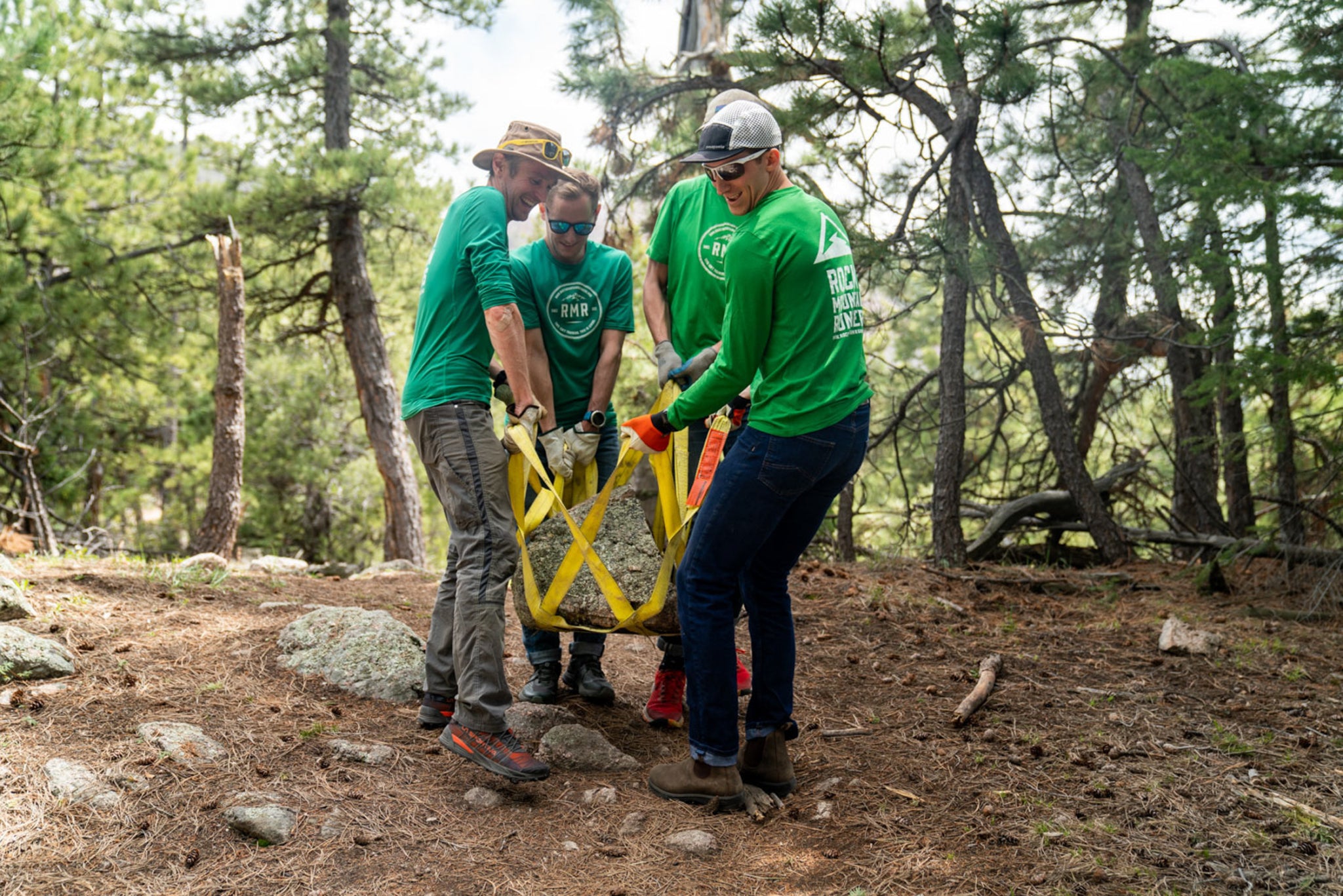 RMR members work on a trail on Bear Peak, followed by a run down the steps they created.
RMR members work on a trail on Bear Peak, followed by a run down the steps they created.
RMR’s core principle is written right on their shirts: “This isn’t training. This is living.” The group finds a collective joy and happiness being on the trails with new people. It’s not actually about being fast or running 100-mile races, it’s about building a shared community. “Without hyperbole, RMR is family to me. The running benefits have been secondary,” says Paul Hooge, who is one of the older members, at 58. Hooge joined in 2013 when there was just a booth’s worth of folks. “This group has made me a better person and opened me up to positive social interaction I never thought I was capable of.”
Hooge recently ran the Rim-to-Rim-to-Rim five times in a row—the first person ever to do such a thing. That’s 226 miles with 58,000 feet of vertical gain over four days and 17 hours. He wore his RMR greens and a woman at Phantom Ranch asked him who all these people were in green shirts running around. Of course, it was just him running back and forth.
“I wasn’t really much of a social person before and the [RMR] culture allowed me to thrive,” he says. “I thought I had some lessons to teach, but I’m amazed at how much these 20- and 30-year-olds have taught me about life.”
To Smith and Koester, the best memories of RMR have been shared with large swaths of the group. Often when someone signs up for a race, it only takes a few hours for a dozen or so others to sign up, too. Everyone rents an Airbnb together, and you’ll wind up with 60-year-olds sleeping on the floor in somewhere like Moab or Wyoming with a bunch of 20-year-olds.
“I struggle to see any other opportunity in life like this. If you don’t race, no one cares. No one cares if you win or you’re dead last,” says Smith. “But people are pretty stoked if you get out there and go for something that you’ve been wanting to achieve.”
 Up in the mountains of Colorado.
Up in the mountains of Colorado.
Image Banner: A mobile aid station during the Boulder Badass 100—an annual 100-mile run linking all the major trail systems in Boulder, Colorado.
All photos by Brendan Davis


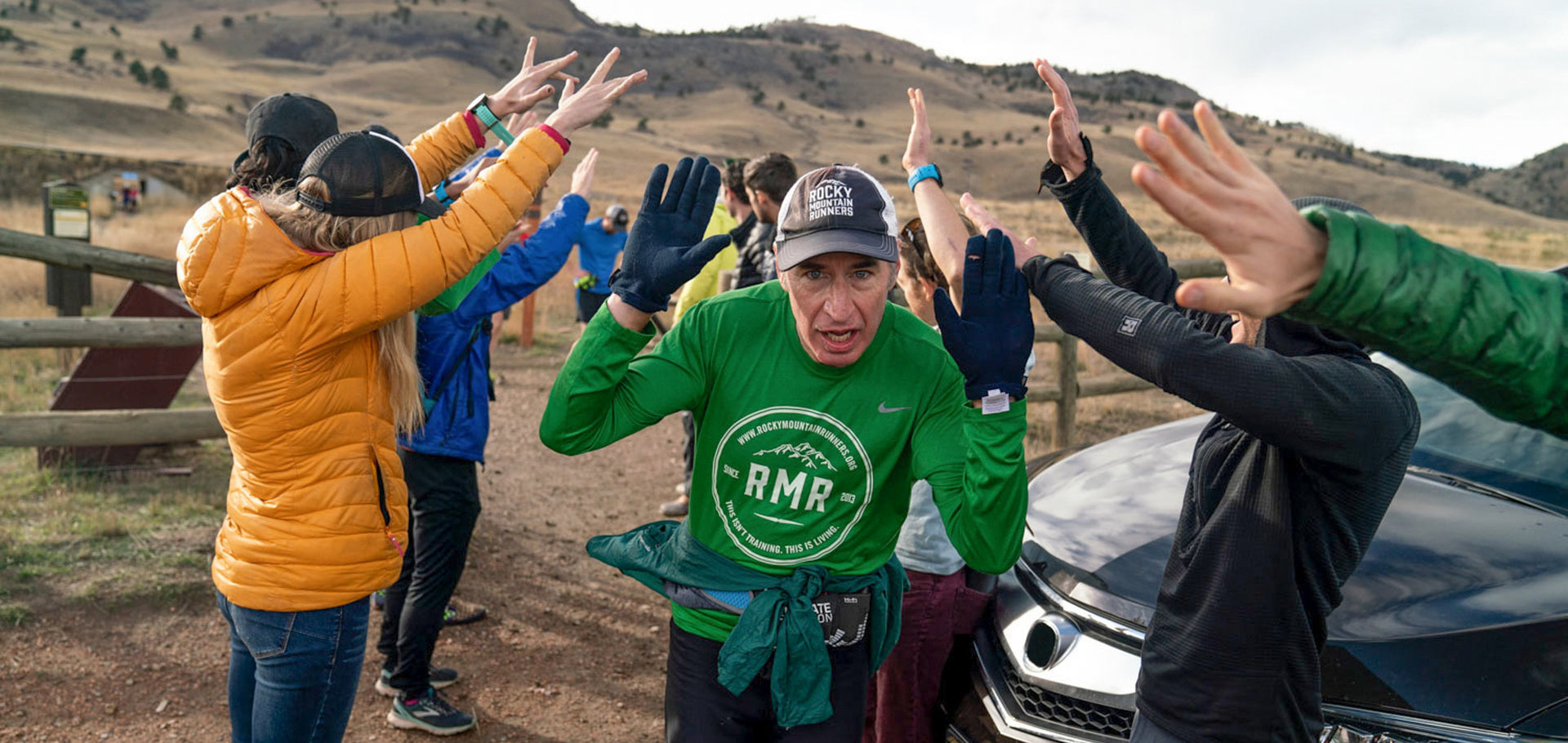
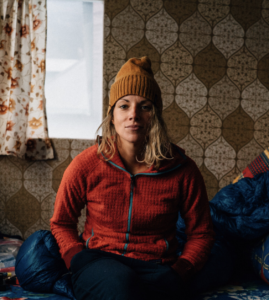











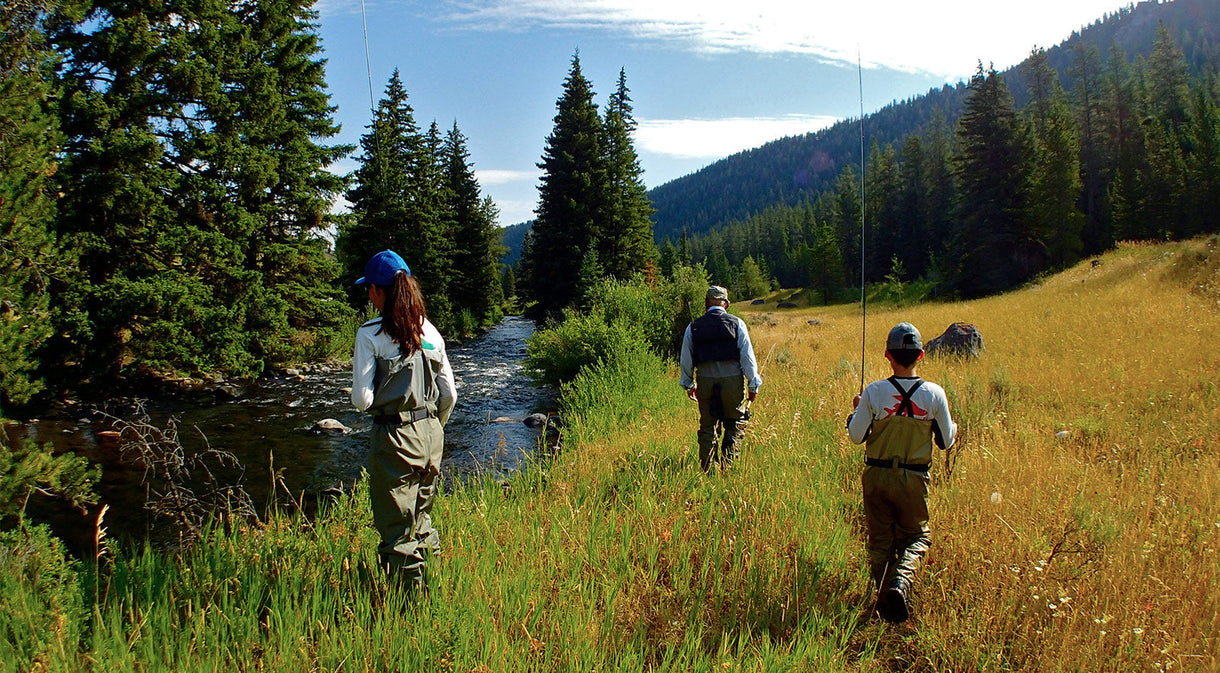






















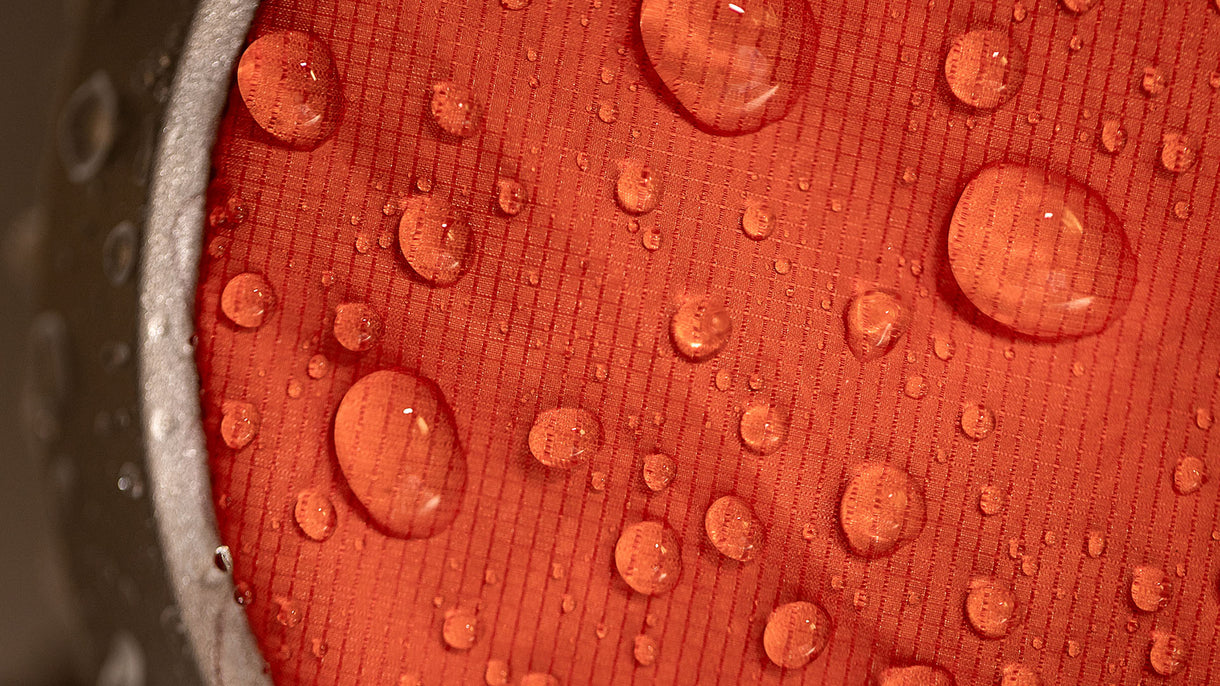















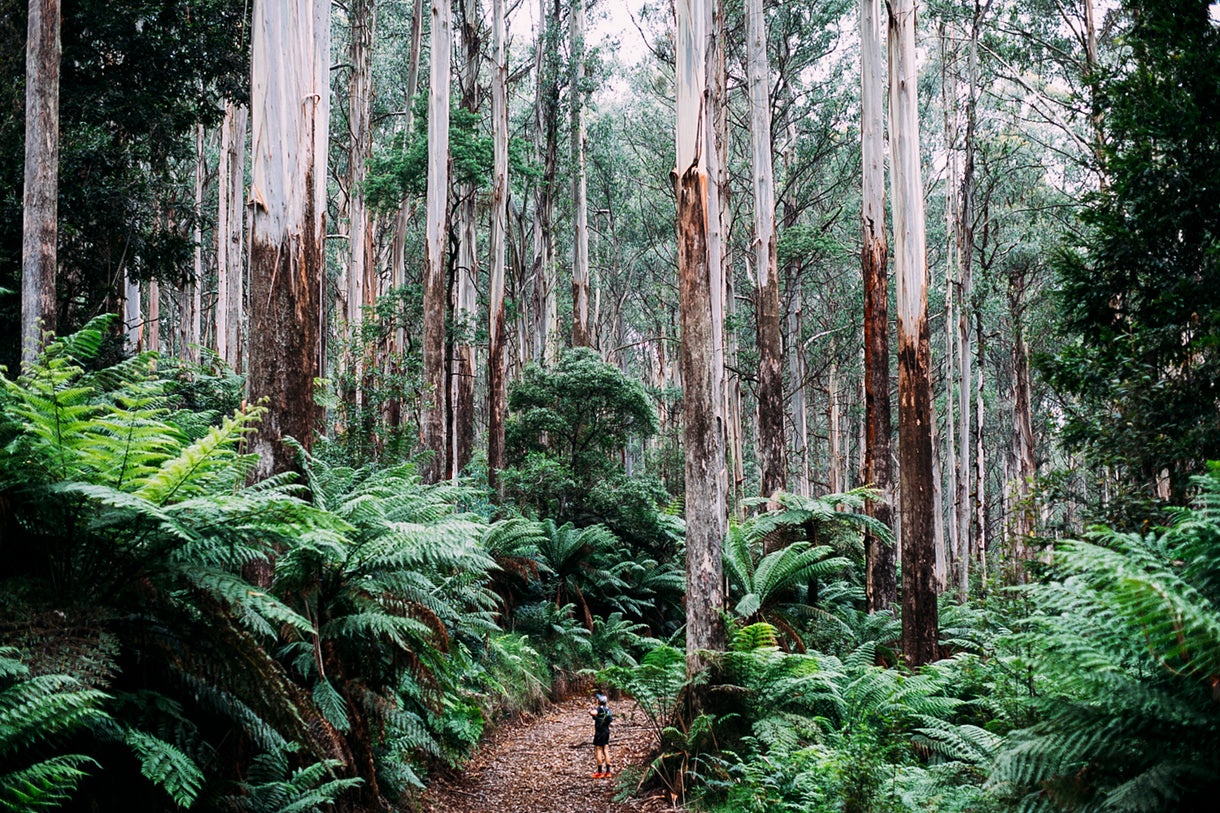
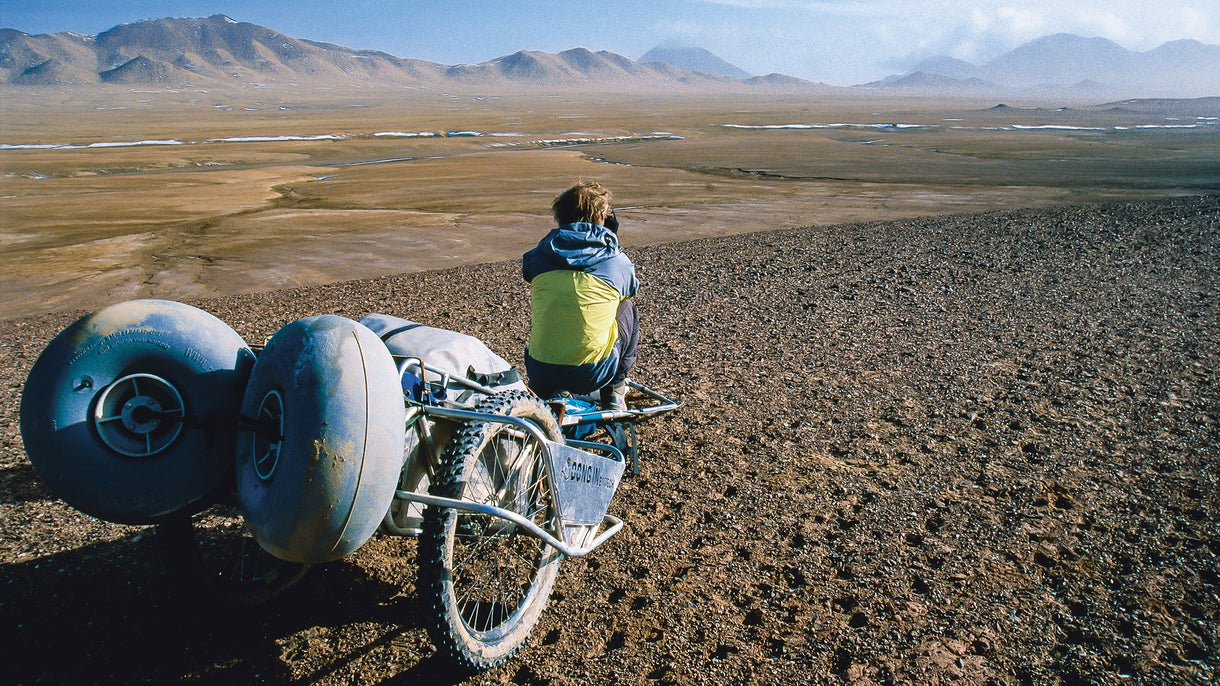


Anna is a freelance writer and filmmaker who likes to tell stories about people and how they connect to the places they love. She's based in Boulder, Colorado.